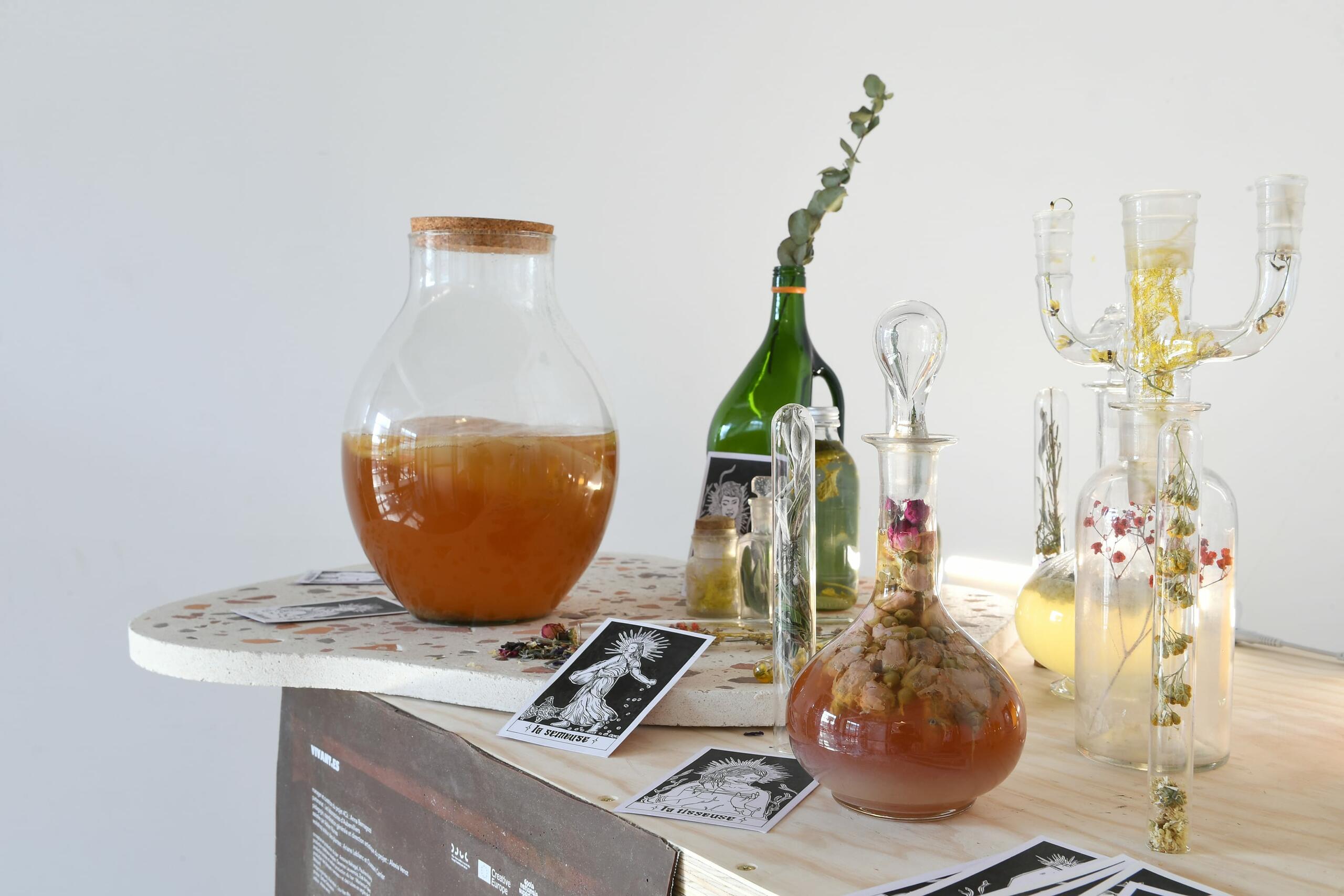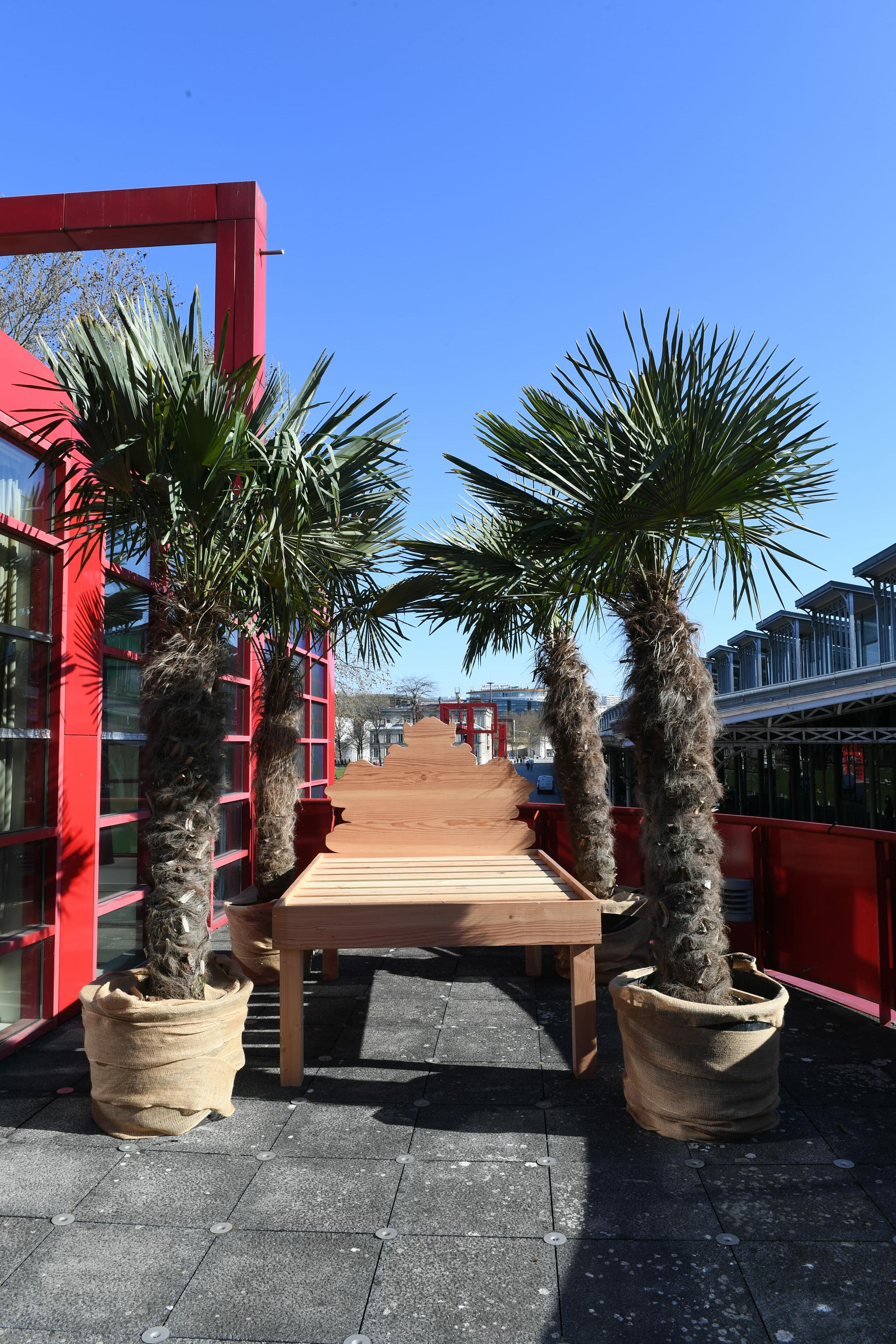The ExpoAction "Infinite Creativity for a Finite World" that took place from March the 30th to April the 16th 2021 at the Folie n°6 of the Parc de la Villette & at the VilletteMakerzs in the framework of "100% L'Expo - Sorties d'Écoles", aims to highlight the unique capacity of design to actively engage in the co-construction of a desirable future, to seek out, reveal and enhance "common sense" through modest and sober practices whose resilience has been proven over time. More than just an exhibition, ExpoAction offers visitors the opportunity to dive into the heart of a number of ongoing actions carried out by a new generation of designers committed to the long-term development of collective creative impulses, to reveal the power of the social link. It affirms the need for a "civic design" that allows the "acting" spectator to experience and measure the daily impact of his or her actions and, above all, to enjoy the benefits of their collective resonance. Starting from socially, politically and economically vulnerable, complex and conflicting situations, co-design is able to direct and enhance the infinite creative impulse of each individual through responsible, concrete and restorative actions, which respect the fragility of the human being, of the living and the finiteness of the planet by building, or "composing"1, a sustainable relationship with the other, with time and space, with the environment and the world.
The ICCFW ExpoAction is EnsAD's fourth (and final) contribution to the European (Creative Europe) 4Cs research project (from Conflict to Conviviality through Creativity and Culture - www.4cs-conflict-conviviality.eu). The research project aims to explore how culture and creativity can be effective resources to reflect on emerging forms of conflict and to imagine creative solutions to address and resolve them. The 4Cs project aims to redefine the conceptual framework for intercultural dialogue and to assert the role of public art and design institutions in promoting collective action to foster cultural diversity and facilitate intercultural encounters. The project brings together several European art and design institutions: FCH-UCP (PT), Tensta Konsthall (SE); SAVVY Contemporary (DE); Royal College of Art (UK); Fundació Antoni Tàpies (ES); Vilnius Academy of Arts-Nida Art Colony (LT) and Museet for Samtidskunst (DK)
In his essay "The limit of human understanding", John Locke argues that in considering the infinite, humans are likely to make mistakes and this would have led them to perplexities and contradictions. This feeling of having before us the possibility of choosing among infinite possibilities has indeed been one of the major problems of the Übermensch of the 20th century, and it has led to abuses of all kinds, to alterations in our way of life, the consequences of which we are all beginning to pay. We have destroyed, drained, altered because we have forgotten our state as interdependent beings. In these difficult times, young designers feel that the times of hedonistic individualism are far behind them, that it is more necessary than ever to "give people a voice", to open up and test new methodologies of research, investigation and production that are more collaborative and inclusive, to articulate their common actions within a world whose finiteness we all now recognize. Understanding, comparing and capitalising on the differences in their forms of expression will act as a possible multiplier capable of enriching their narratives and broadening their framework of action.
The current health crisis is a new opportunity to prove the power of the community and the social link against individual vulnerability. But this unique power is still underestimated despite the number of significant grassroots initiatives that already exist, showing that our infinite creativity can also have positive aspects and lead to the improvement of our coexistence, through the development of solutions that respect human and non-human needs and expectations. It is now urgent to reveal them and to finally connect their significant points through the assumed and responsible creation, as the philosopher Franco Berardi would say, of a "molecular society based on utility". Designers are among the best specialists in utility. The territory of this "infinite utility" must be redefined, its narratives elaborated and shared, its images nurtured and nourished, its aesthetics and objects co-defined and co-developed.
Anna Bernagozzi
Lire plus
The concept of infinity, as Ludwig Wittgestein asserted, also has in itself the meaning of a process that is ongoing and by definition unfinished. The possibility of dealing with a "useful infinity" thus becomes an integral part of the creative process of the "ExpoAction" because it naturally implies interaction with the public, who will understand the necessary role they can play in contributing to the evolution of these "useful" projects in progress. Students from ENSAD actively participated in the research, reflection and implementation of 4 of the 18 ExpoAction actions and in the scenographic design of the latter. Throughout the year, four interdisciplinary groups of students from all the years of the programme carried out applied research and created "desirable presents" with the designers Alexia Venot (in partnership with the Semeuse des Laboratoires d'Aubervilliers), Cédric Carles (Atelier 21), Lucas Dauvergne (in partnership with La Réserve des Arts) and Nicolas Verschaeve (in partnership with Vive les Groues). In the current health context, the four groups were able to work independently in these (third) places outside the university and discover the specific contextual creation of the four invited designers, thus reducing the congestion of the classes.
The projects on display affirm the need for a "civic design" which, as Jacques Rancière would say, allows the "acting" spectator to experience and "see" the daily impact of his or her actions and above all to enjoy the benefits of their collective resonance. Hannah Arendt declared that "the nobility of man is his capacity to respond to the world entrusted to him"2. Because this action defines his political vocation, his power as a citizen, I have chosen to include in the exhibition several "acting works" by students of the Ecole des Arts Décoratifs and to mix them with the works of professionals. This inclusive will on my part aims to make them understand and measure the impact that their philanthropic work can have on their respective territories of action, if this work is accompanied by a dialogue and an active and constructive confrontation with the other members of the same territory. It also aims to avoid a kind of internal emigration that characterises the major refuge of intellectuals and artists during periods of totalitarianism and crisis by a lack of implementation of their (internal) will to question the status quo.
One year after the conference "Faire projet, faire ensemble" which brought together some fifty international experts at the Ecole des Arts Décoratifs, showing the role of design as an intellectual, creative and humanistic process, capable of both fuelling reflection and generating concrete and fluid actions and initiatives, The ExpoAction "Infinite creativity for a finite world" will enable individuals, communities and society in general to understand the urgency of reconnecting with the present and to experience it by becoming the actors of a new art of living, which they will have conceived together. At the 2020 conference, the sharing of new knowledge, the methodological comparison for the co-development of new tools and the joint work on promising projects for the future contributed to what Victor Margolin would have called a "framework for action". This framework for action is the founding element of this ExpoAction which brings together, albeit on a small scale, ideals and beliefs about how the world should be. These multiple projections will allow the public, and society in general, to reconnect with the present and encourage action towards a new way of life, in a particularly complex period of transition from a "parasitic society" to a "symbiotic society". This symbiotic society, sensitive and without borders, where the singularity and diversity of each individual will contribute to the regeneration of the whole, will then be able to articulate its resources and creative potential to adapt and react locally to the constant environmental changes, through the co-creation of new participative, modest, porous and multiple objects/tools.
It may seem almost anachronistic and absurd to have dared an exhibition based on the principle of Action in a world paralysed by the health crisis, by the action of a microscopic organism. Yet it was precisely in this context that many of us were able to appreciate the interdependence that links us to each other and the importance of coordinating our actions with a common goal. It is for this reason that I wanted to highlight the fundamental role of each Actor in his or her commitment against the status quo and for the common good, and how his or her "mission" is more effective and intelligible when it is accompanied, valued and replicated by the community. In any case, these are specific long-term actions, plural, participative and generative Actions that will continue to exist even after they have ended. Even if the ExpoAction cannot be experienced in the first person by the public, I want to hope that its digital version (infinitecreativityfiniteworld.com) and the 6 actions shared at the Villette Makerz can serve as a prototype for other future ExpoActions. Let's hope that these humble, necessary, responsible, restorative Actions, respectful of the fragility of humans and living beings, co-initiated by international designers and artists, can be explored, questioned, modulated, shared... ad infinitum!
- An Ecology of Relations, Philippe Descola, CNRS Editions 2019
- The Crisis of Culture in The Human Condition, Hannah Arendt, op. cit, p. 762.
The « territories » of the ExpoAction are Infinite but 8 among them are capable of sheding light on the correspondances between single Actions and their individual Utility. They show the importance of situating the knowledge and prove that there is no separation between the observer and the reality and everyone can be involved in an Action. The knowledge around these territories is scientific but also emotional, affective, bodily and spiritual.
This knowledge needs to be widespread and accessible to everybody to allow social transformation. This transformation need Actions that avoid systemic injustice and these Actions need imagination and friction to come into being. As the philosopher José Medina assirted “by comparing and contrasting their imaginative resistances, people can become sensitive to other ways of imagining and inhabiting worlds of possible experiences”.
José Medina, The Epistemology of Resistance, Oxford: Oxford University Press, 2012
















